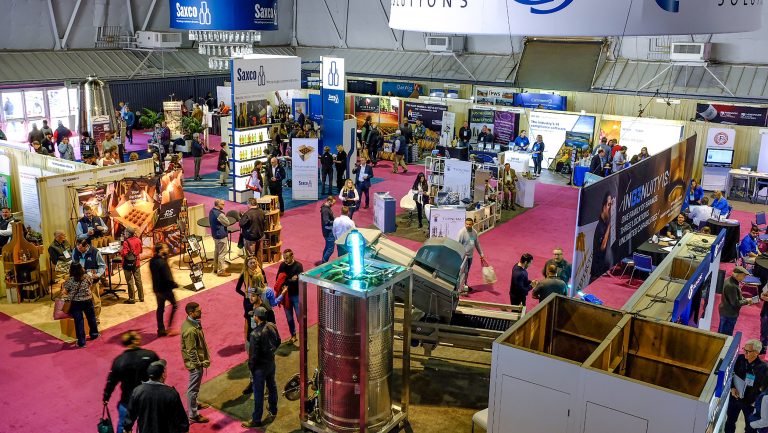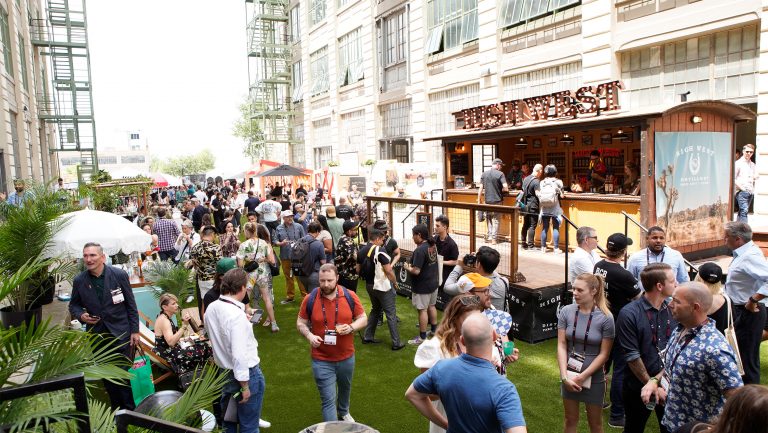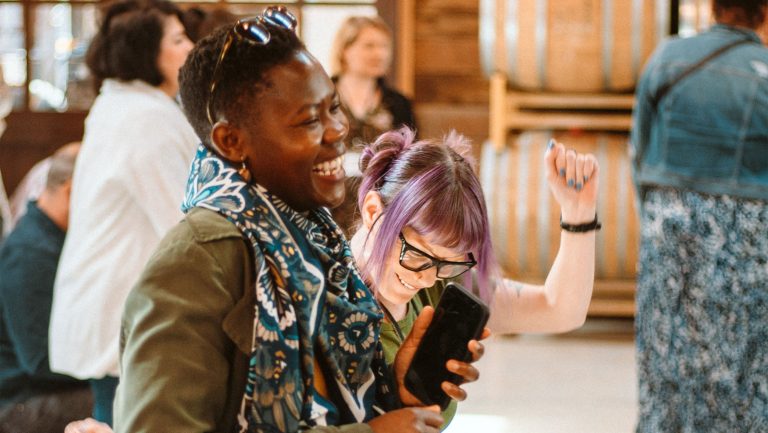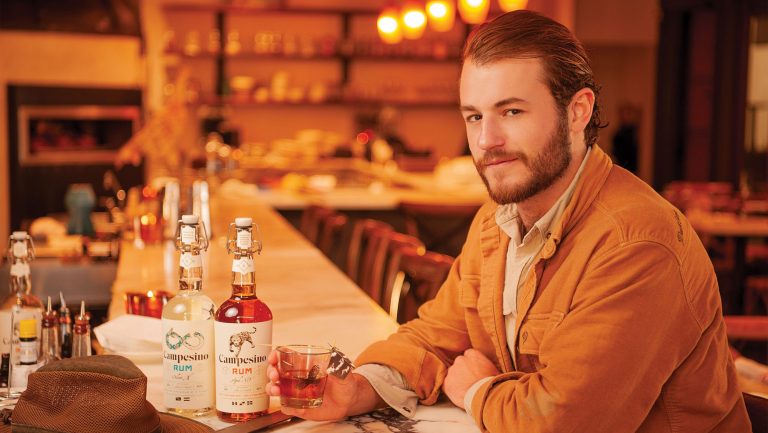There wasn’t much good news for wine professionals convening in Sacramento for the Unified Wine & Grape Symposium (Unified) on February 4-6.
According to a report issued in January by industry tracker IWSR Drinks Market Analysis (IWSR), wine consumption in the U.S. dropped 0.9 percent last year—the first volume decrease the industry has seen in 25 years. Oversupply and decreasing demand will only increase, according to Silicon Valley Bank’s State of the Wine Industry 2020 report. And a survey of 2,000 American wine drinkers by the firm Wine Intelligence suggests the slipping consumption is a function of moderation trends and category switching.
Understanding and meeting these challenges was the major theme of this year’s Unified. During and between sessions, attention revolved around the trends chipping away at wine’s share of palate, mind, and pocketbook—and how to turn those challenges into opportunities.

Don’t miss the latest drinks industry news and insights. Sign up for our award-winning newsletters and get insider intel, resources, and trends delivered to your inbox every week.
Answer the Hard Seltzer Threat
The biggest threat to wine, panelists in a session titled “A Rising Tide Lifts All Boats” agreed, is hard seltzer. Led by White Claw, the category jumped from a 0.8 percent share of the U.S. alcohol beverage market in 2018 to 2.5 percent in 2019, per IWSR data.
“A lot of us think of a 24-year-old drinking White Claw out on the beach or at a backyard barbecue,” says Jordan Kivelstadt, co-founder of Free Flow Wines in Sonoma, California, and founder of Kivelstadt Cellars, “but when you actually look at the demographics of hard seltzer, it’s much broader. It’s more affluent, it’s college educated, and the age range is a lot wider” than people assume.
Hard seltzer’s advantage is that many people perceive it as a healthy alternative to other alcoholic beverages, even though many on the market are far from natural, Kivelstadt explains. By comparison, wine can and should promote its authenticity, he says. “We take grapes that we grow in the earth and turn them into a product. As an industry we need to stand up and yell it from the rooftops. People want to know that [the food and drink] they are consuming came from a real place, so we have an opportunity to take this moment to define why wine is the best and most sustainable beverage.”

Embrace Health and Awareness
The seltzer challenge has magnified the degree to which wine professionals are feeling the need to confront health and wellness concepts head on. (Earlier this week, market research companies Wine Market Council and Nielsen Global Connect announced plans to collaborate on a wine and wellness study.)
For fellow panelist Pat Roney, CEO and founding partner at Vintage Wine Estates in Santa Rosa, California, the health and wellness trend is a chance for wineries to innovate. “We’re in the process of launching what I call Wine Cooler 2.0,” he says, “which is the intersection of wine and health.” This includes wine products infused with pomegranates and blueberries, coconut water, kombucha, and green tea. “We’re getting pretty good reception at a higher price point than the seltzers,” Roney says. “Consumers are looking for different choices.”
Likewise, Jackson Family Wines in Santa Rosa, California, is planning to develop a lower-alcohol, low-calorie wine to appeal to moderation-minded drinkers, notes Rick Tigner, president and CEO.
During the session “20/20 Foresight—Wine’s Challenging Next Decade,” Rebecca Hopkins, founder of A Balanced Glass in San Francisco and vice president of communications at Folio Fine Wine Partners in Napa, California, pointed out that while federal regulations prohibit alcoholic beverages from making health claims on labels or in advertising, wine can get its message across in subtle ways, such as hosting yoga events and wellness workshops. “We have a lot of words we can use that are not specifically around health,like culture, community, gathering,” she says. “Does your winery have images of things we associate with being healthy, being well, being outdoors, being happy? If you have someone in your company who’s a trail runner, tell that story to your consumers.”
With some wine professionals reporting they are struggling with overconsumption and not taking care of themselves, Hopkins says, it’s important for wineries to also embrace wellness in the workplace. “Leadership needs to live by example and invest in the well-being of their people,” she says. “Connect yourself to this growing consumer interest. Make health and wellness part of your workplace culture.”

Enhance the Customer Experience
The way people purchase in general has changed. “People are getting used to things like Amazon, where they pick up the groceries for you and drop them off at your house within hours,” says Jackson Family Wines’ Tigner. “That e-commerce piece is going to expand. Safeway, Albertsons, and Wine.com are moving toward an Instacart model.”
Retailers can look to expand their rapid delivery services, and wineries can consider two-day shipping options and Instacart’s same-day grocery delivery service.
Wineries can create more meaningful consumer connections by upping their tasting room game. In California alone, 24 million wine travelers spend an average of $7 billion per year on wine-related activities, according to Visit California, the state’s tourism board.
With thousands of wineries competing for visitor dollars, differentiation will be the key to success in the coming years. If you’re operating 20 different tasting rooms, Kivelstadt explains, each one should offer an authentic experience that is “unique and special.” In April, he plans to open a Kivelstadt Cellars wine garden in Sonoma with a family-friendly atmosphere and comparative tastings of Kivelstadt wines alongside those of other producers.

Make Wine More Accessible
Suppliers can broaden wine’s reach through alternative packaging that makes it easier to drink wine in nontraditional places. While Kivelstadt sees a shakeout coming for the canned wine market in the next 12 to 18 months due to market saturation, bag-in-box and carton (Tetra) packaging sales continue to show healthy growth. “We as an industry need to embrace wine consumption appropriately in as many use occasions as we can,” he says, “because they broaden wine as a category.”
Millennials are driving demand toward more accessible wine options. Once regarded as the wine industry’s great hope, this generation (adults under age 38) has yet to engage with wine in a meaningful way. “Wine naturally encompasses many millennial values,” says Juliana Colangelo of Colangelo & Partners, a public relations firm in San Francisco, during the “20/20 Foresight” panel discussion. “It’s made from real ingredients by real people, and it’s created to bring people together and create community. So it’s about adapting our marketing and our messaging to appeal to these values.”
Producers can harness digital marketing and social media tools to make wine “relatable and shareable.” Rather than simply posting images of your vineyards or tasting room on Instagram, she says, wineries can create and share content about topics millennials care about, like pop culture, current events, and social issues.
Vintners can also court millennials by partnering with meal delivery services, creating more entry-level products, offering single-serve packaging, and providing a range of experiential tasting room options that younger adults can afford. “Ultimately it’s about trial,” Colangelo says. “We need more people to try wine.”

Dispatch
Sign up for our award-winning newsletter
Don’t miss the latest drinks industry news and insights—delivered to your inbox every week.
Tina Caputo is a writer based in Northern California who covers wine, beer, food, and travel. She was formerly the editor in chief of Vineyard & Winery Management magazine, and her work has appeared in Wine Enthusiast, Visit California, Sonoma magazine, the San Francisco Chronicle, and many other publications. She also produces the podcast Winemakers Drinking Beer.







